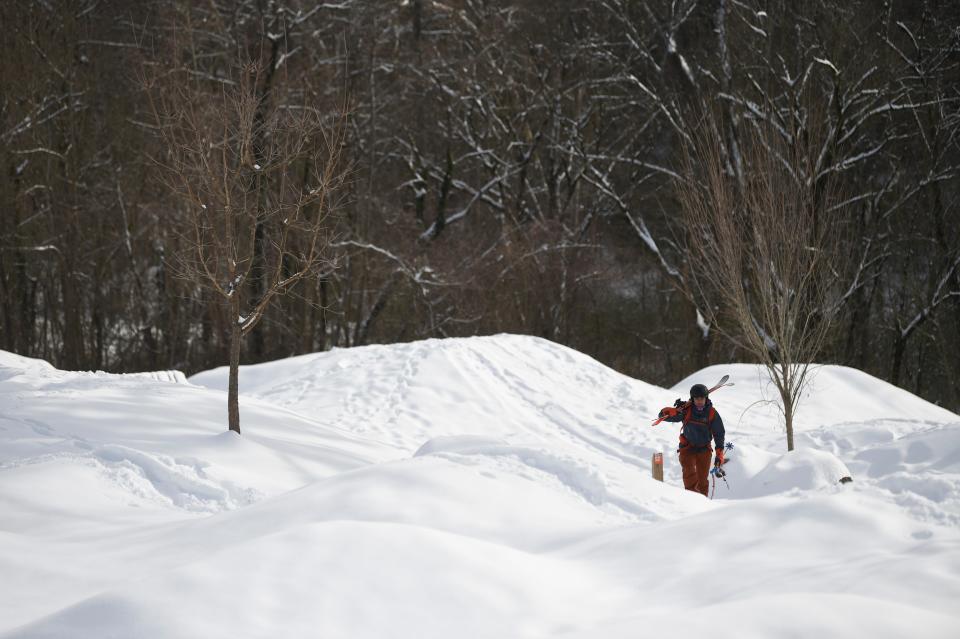Will water levels rise when Knoxville's snow melts? TVA monitors as next week warms up
Ahead of next week's big thaw, when the 6.5 to 10 inches of snow that fell Jan. 15 on East Tennessee will finally melt, the Tennessee Valley Authority is monitoring how runoff may affect river levels.
TVA's River Forecast Center balances water levels along the Tennessee River, where snow runoff may push the federal utility to let water through some of its dams.
Darrell Guinn, the center's senior manager, told Knox News the blanket of snow in Knoxville and Knox County is equivalent to between 0.5 and 1 inches of water.
For comparison, a light storm Jan. 9 brought 2.37 inches of rain, according to the National Weather Service.
"There's no risk of flooding from the snowfall that we have," Guinn said. "That's pretty abnormal to see an event of that magnitude in this area. Not saying it's impossible, it's definitely possible, but the right conditions would have to be in place."
Knoxville rain next week will add to snow runoff
The amount of water that results from snow melting varies greatly depending on climate and temperature, which affect the density of snow. The colder and drier it is outside, the less water is stored in snow.
When the temperature is between 28 and 34 degrees, there is about one inch of water for every 10 inches of snow, according to the U.S. Department of Agriculture.
The River Forecast Center does not include snow runoff in its water level models because it's so rare for Tennessee to get heavy snow. Average annual snowfall in Knoxville is just 4.6 inches, while average rain is 52 inches, according to the National Weather Service.
The 2 to 2.5 inches of rain forecasted for later next week will likely run off into streams faster after the melted snow has saturated the ground, Guinn said.
"With next week's rain event, yes, we could definitely be in a situation where we are moving into an operation of managing high flows and managing storage levels," Guinn said.
TVA held the rain from Jan. 9 in its reservoirs to help meet record power demands as temperatures plummeted. On Jan. 17, as TVA saw a record demand of 34,524 megawatts, its hydroelectric dams were producing over 5,000 megawatts of power, according to the U.S. Energy Information Administration.
Using models, the River Forecast Center creates schedules to let operators know how much water to let through TVA's 49 dams on the Tennessee River. When runoff is heading for reservoirs, the center helps prevent flooding by spilling water through dams.
Water levels at TVA's reservoirs are still above normal levels. On Jan. 19, the agency was spilling water through five of its nine main river dams, Guinn said, to recover the water level in its tributaries while ensuring it had enough to meet power demand at 29 power-generating dams.
TVA projected demand of over 30,000 megawatts as temperatures are set to drop to the teens or single digits this weekend.

Daniel Dassow is a growth and development reporter focused on technology and energy. Phone 423-637-0878. Email daniel.dassow@knoxnews.com.
Support strong local journalism by subscribing at knoxnews.com/subscribe.
This article originally appeared on Knoxville News Sentinel: TVA prepares for Knoxville snow to melt, no risk of flooding

